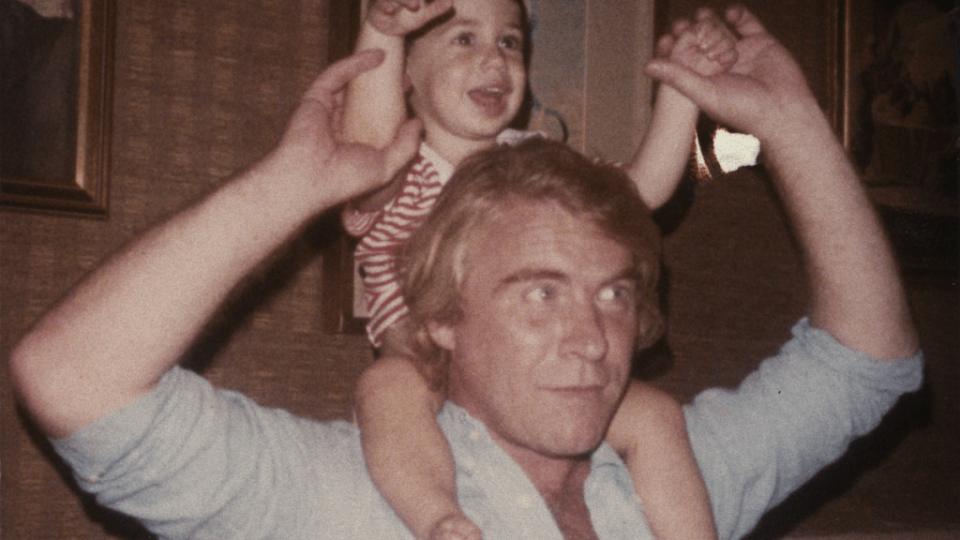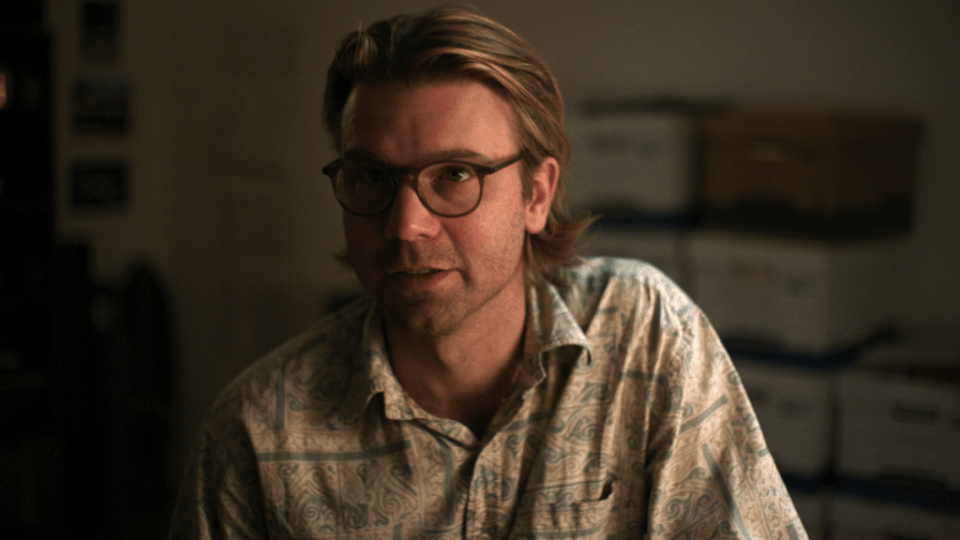How ‘American Conspiracy: The Octopus Murders’ Channels Alfred Hitchcock’s Use of Duality
Duality is one of the most organic themes in literature and movies. The idea of two sides within one person – or two people who share one identity – has been explored since storytelling was invented. And Netflix’s new four-part docuseries “American Conspiracy: The Octopus Murders” offers a tantalizing take on the concept.
While mainly focusing on a vast network of corruption and malfeasance in the U.S. government, the series also tells another story of two men: Investigative reporter Danny Casolaro, who was researching the scandal he called “The Octopus” when he was found dead in 1991; and photojournalist Christian Hansen, who a decade ago took up Casolaro’s cause and continued to track the deceased writer’s leads.
The two men, as it happens, look significantly alike.


“It’s a little freaky,” says journalist and Casolaro’s close friend Ann Klenk of their resemblance in the series’ second episode, “The Trap Door.” “You know, it makes me a little uncomfortable. I think it’s very weird. I thought … ‘Am I in a parallel universe?'”
Director Zachary Treitz (“Men Go to Battle”) did not shy away from the doppelgänger device. In fact, Hansen plays Casolaro during several wordless re-enactment scenes over the course of the series, as we see Casolaro on the trail of a conspiracy that includes 1980s software developers, the CIA and high-ranking officials.
Casolaro’s own mother also had a strong reaction to meeting Hansen for the first time. “She’s since passed away, but when she first saw Christian, she was so taken aback by the uncanny resemblance,” Treitz told TheWrap. “Christian was sitting there with his reporter’s notebook and his blazer on, like a disheveled kind of journalist look. So when the reaction is that strong from Danny’s own family members, I’m not going to ignore that.”
Treitz cited the influence of Alfred Hitchcock, who made several movies in which doubling is a core theme – “Shadow of a Doubt,” “Strangers on a Train” and, most strikingly, “Vertigo.” He also mentioned Roman Polanski’s fantastic 1976 drama “The Tenant,” in which Polanski himself plays an apartment dweller whose identity merges with that of the previous occupant.
“The parallels between [Casolaro and Hansen], even beyond the superficial, are powerful,” said Treitz. “So I took it into this Hitchcockian area and used doppelgänger references that exist already in the language of cinema.”
Treitz added with a laugh, “Also, for purely practical reasons, we needed someone to play Danny.” Treitz and Hansen, in fact, are longtime friends. The filmmaker remembered shooting documentary footage at Casolaro’s actual home, which has since been knocked down. “And I said to Christian, ‘Why don’t you just walk in front of the camera and pretend to open the door,'” Treitz said. “I’d seen footage and pictures of Danny at his house and I was like, ‘Oh s–t, [the resemblance] is unsettling and weird,’ but I wasn’t going to just let it go.”
Meaningfully, the duality effect adds a deeper significance as “The Octopus Murders” reaches its conclusion and the series takes the provocative position that conspiracy hunting might warp the mind. When journalist Klenk tells Hansen that he looks like Casolaro, she also says that she feels protective of Hansen, “because you have the same curiosity that Danny had. And I love it and I hate it.”
In the fourth episode, an investigator named Doug Vaughn says, “One of the known tactics of an intelligence service is to have multiple layers of myth that protect some kernel of truth. So we’ve got confusion. And confusion has its purposes because it creates doubt and ultimately paralysis. Some people get sucked down that. They think that they’ve got the answer, they’ve found the key. But, unfortunately, that doesn’t actually happen very often.”
The series crosscuts between photographs of Casolaro and Hansen as we hear Vaughn’s words, a haunting expression of that doppelgänger effect.
Later in the episode, another investigator named Cheri Seymour cautions about the lure of mystery cracking. “You have to make a decision for yourself, which I did,” she says, speaking to the camera, while we see images of Hansen working and relaxing in the world. “Are you going to go back to your normal, boring life, and enjoy small things like movies and barbecues, instead of phone calls from the netherworld? Are you going to deprogram yourself and go back to being a normal person again?”
Treitz told TheWrap, “We went into this series with the naive idea that we were gonna solve all the mysteries and get to the bottom of it and move on with our lives. There’s something really thrilling, from a narrative standpoint and an investigative standpoint, to live in the uncertainty. Even though it’s really taxing, because people aren’t just gonna let us do this for the rest of our lives, nor do we want to do this for the rest of our lives.”
The director explained that he’s proud of what the series uncovered, and Hansen still intends to finish a book project on Casolaro and the Octopus. Visualized as an enormous eight-limbed constellation of connecting stars, the Octopus, he said, “doesn’t have a beginning, middle and end.” But crucial within the series’ conclusion is the idea of moving on, even without a clean answer to every question.
“The story is like a big cave system and we know that there are tunnels we didn’t get to explore,” Treitz said. “We’re haunted by that. There’s more to the cave system. But outside of the cave, up in the sunlight, there are fun things to do.”
“American Conspiracy: The Octopus Murders” is now streaming on Netflix.
The post How ‘American Conspiracy: The Octopus Murders’ Channels Alfred Hitchcock’s Use of Duality appeared first on TheWrap.

